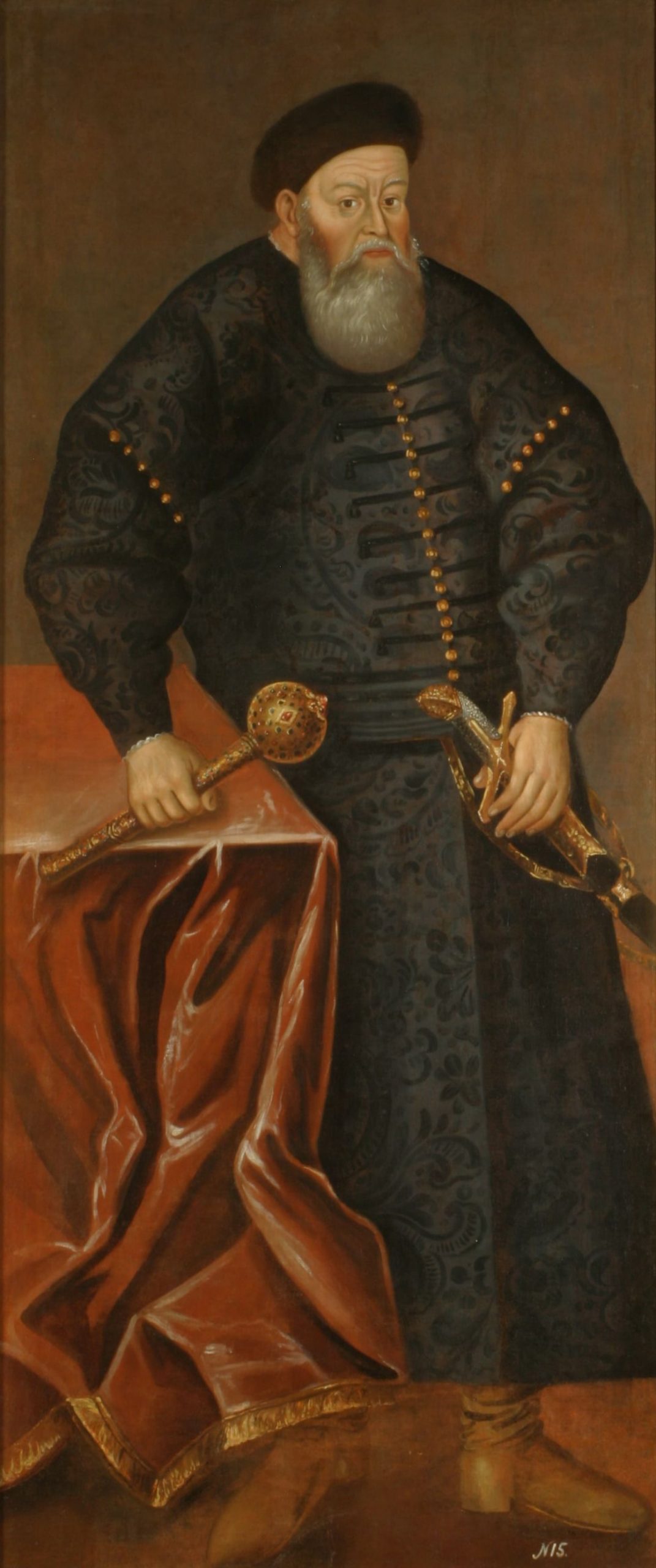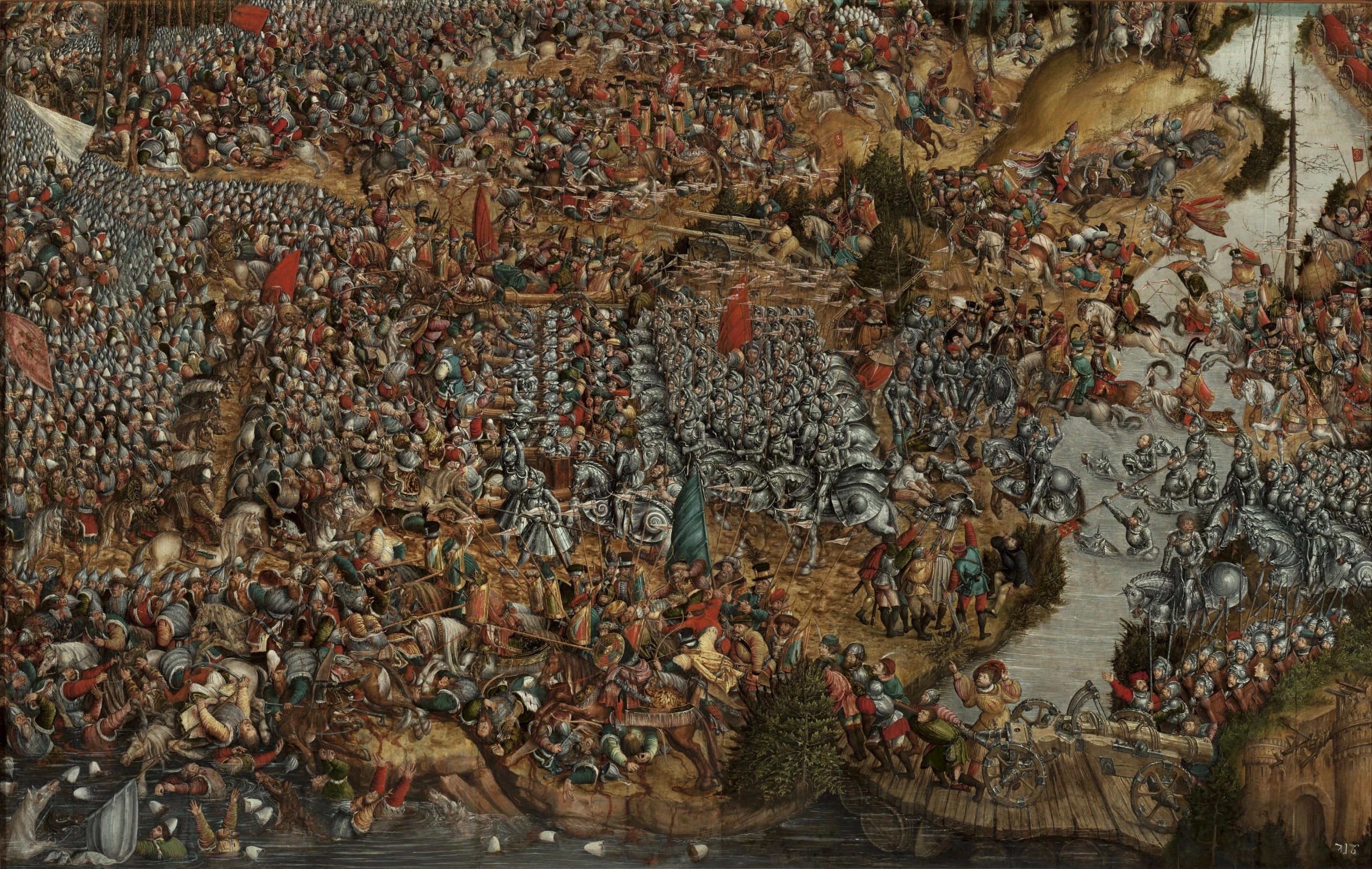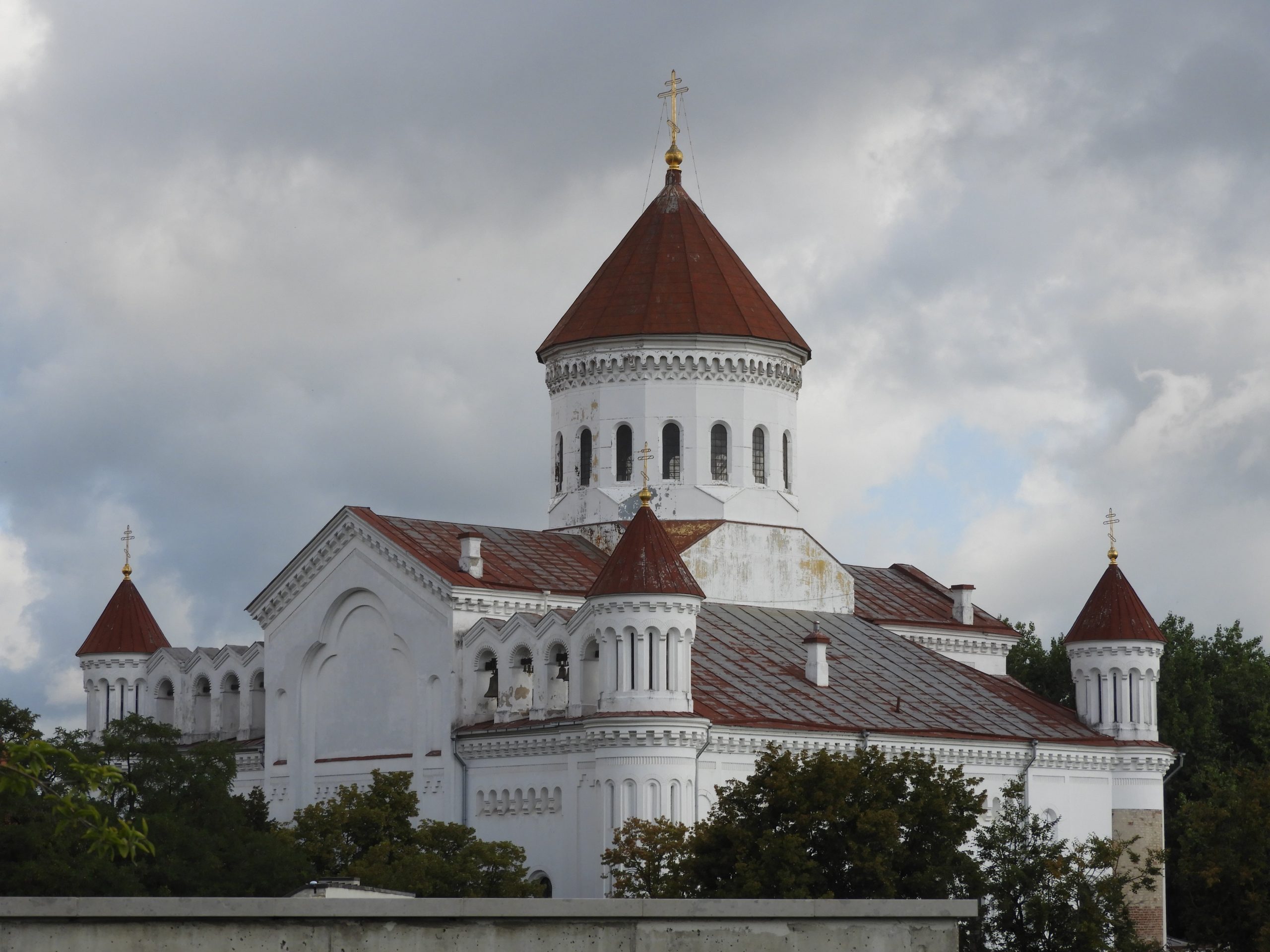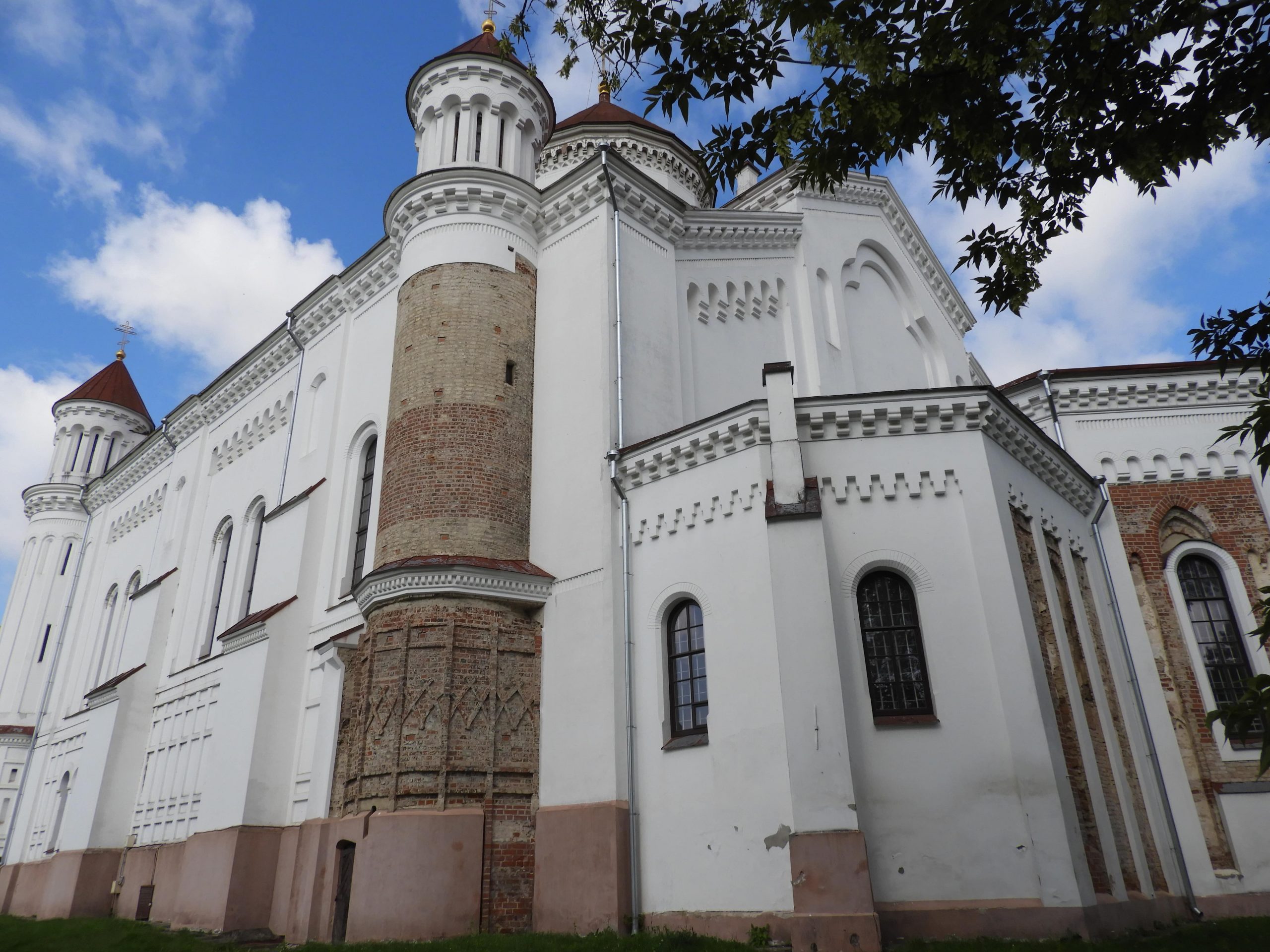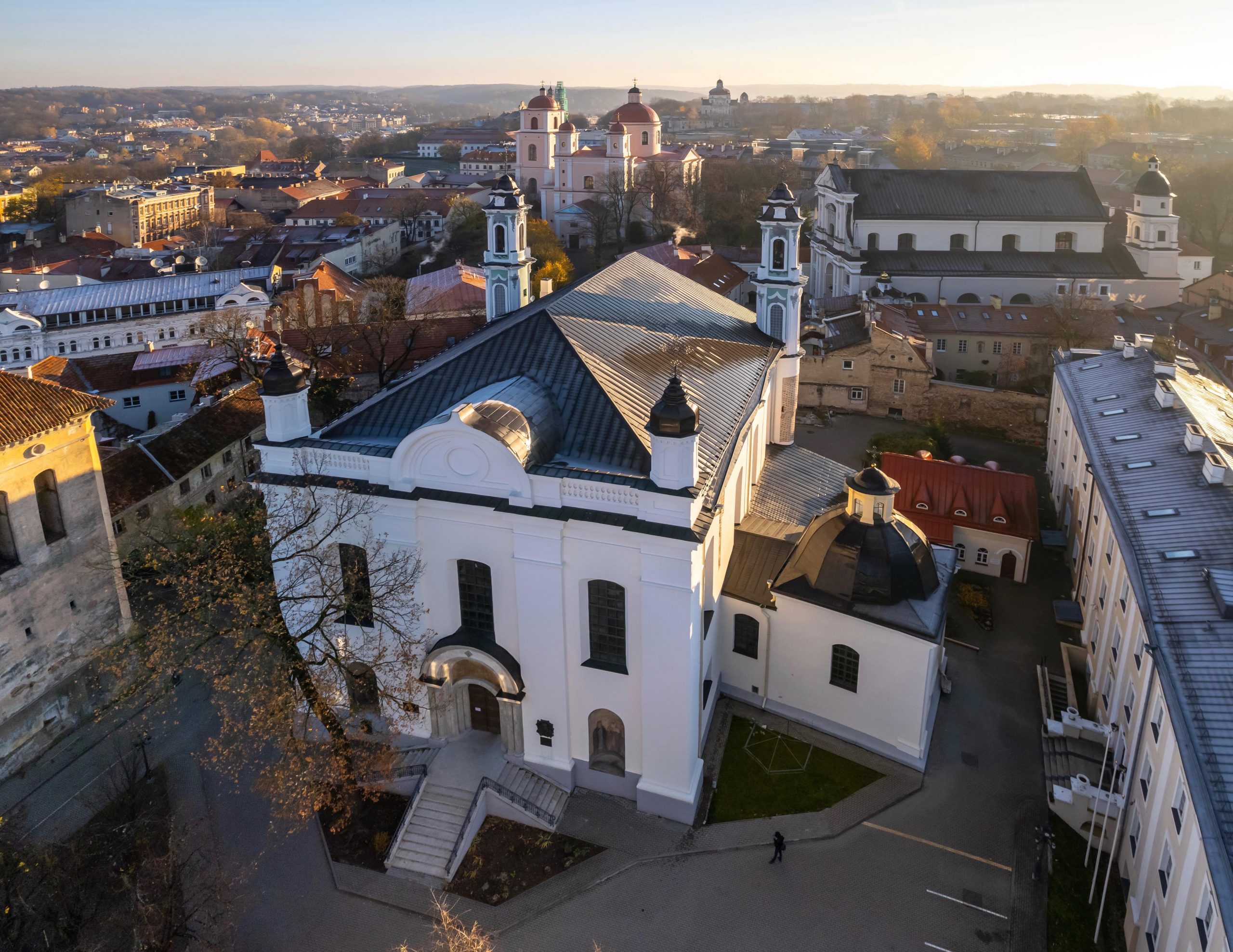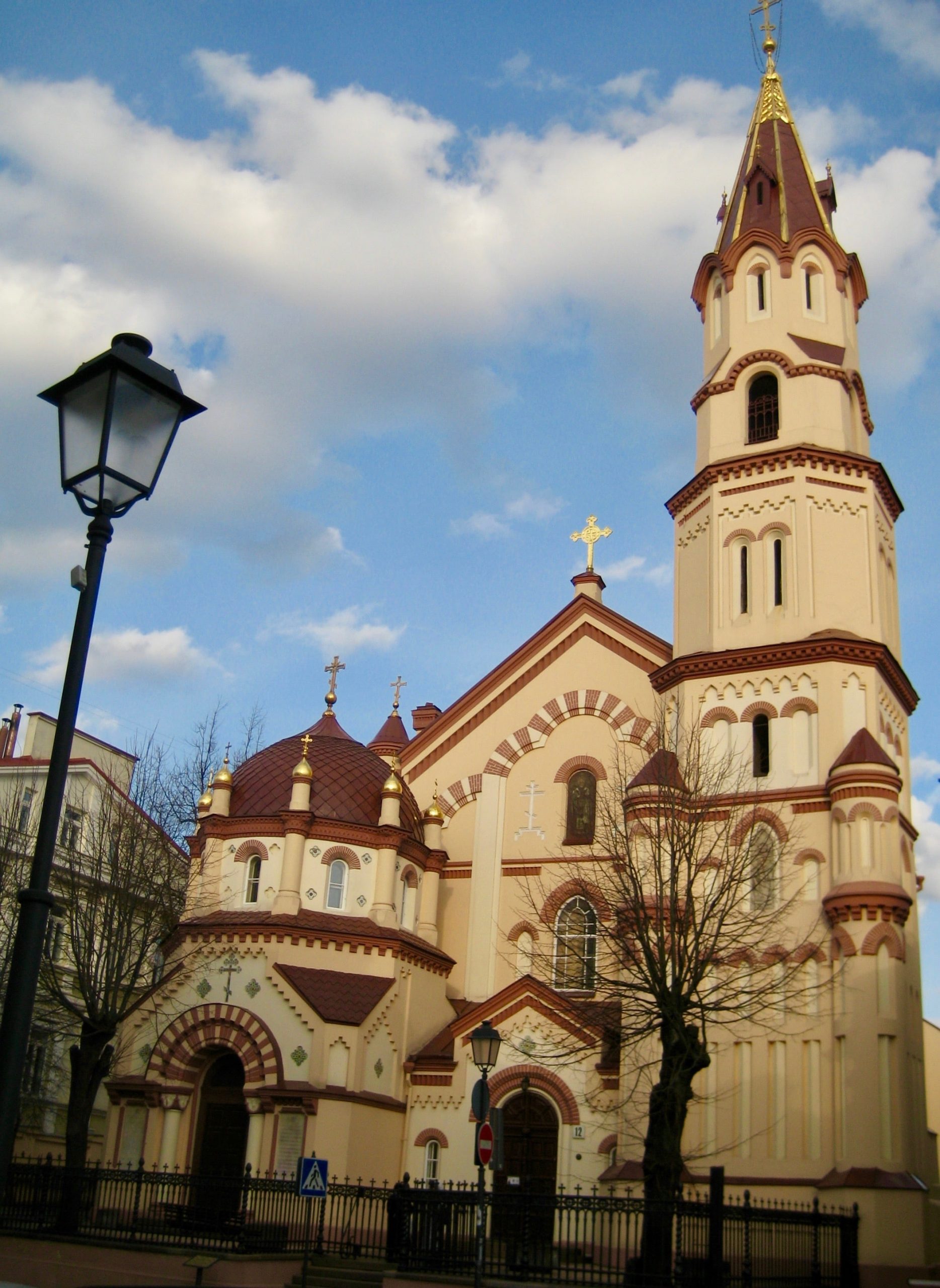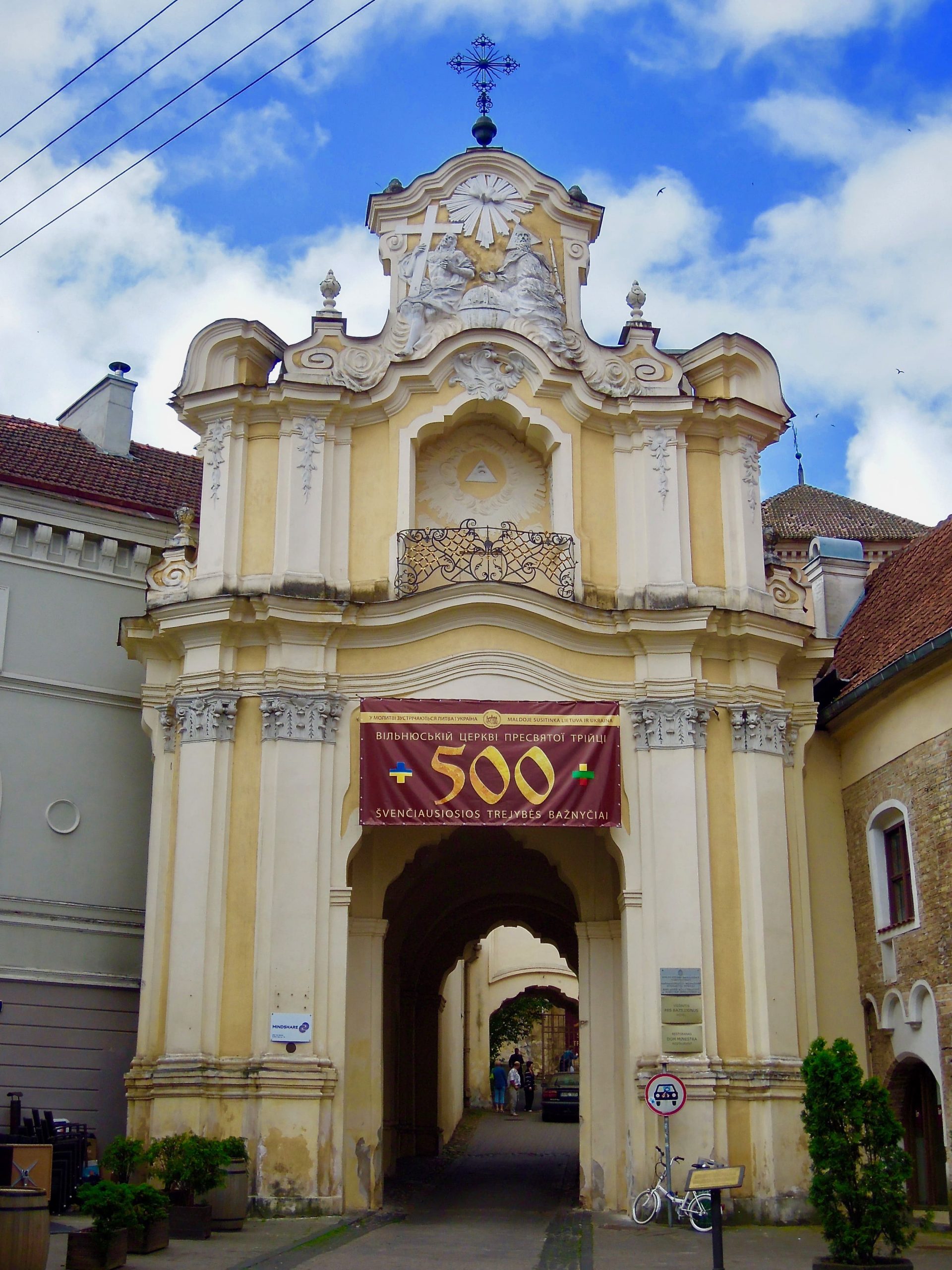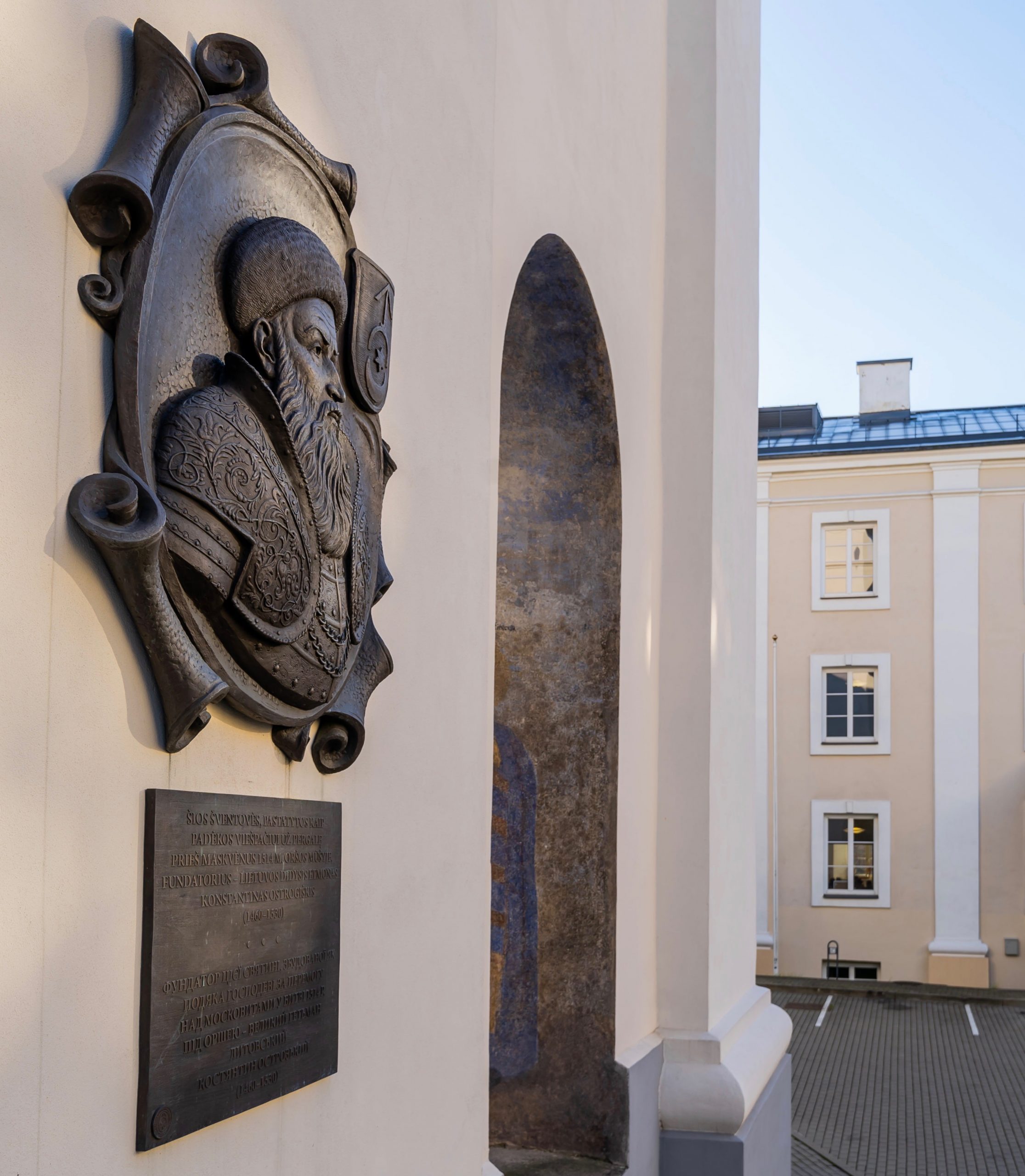Grand Hetman of Lithuania Konstanty Ostrogski (approx. 1460–1530) was praised because of his victory on the battlefield (↑) [1, 2]. However, this Orthodox representative of the political elite of the Grand Duchy of Lithuania was also praised for his religious devotion, being “so devout in his Greek faith that the Ruthenians considered him a saint”.1Tomasz Kempa, Dzieje rodu Ostrogskich, Toruń: Adam Marszałek, 2002, s. 46. Because of his exceptional piety, political status, and financial means, he became one of the most important protectors of the Orthodox Church in the history of the GDL. This is confirmed by the fact that in 1521, at the request of seriously-ill Kyivan Metropolitan Yosyp Soltan, the king of Poland and Grand Duke of Lithuania Syhizmund I the Old, in case of the hierarch’s death were to appoint Ostrogski in charge of the property of the Orthodox Church until its new head was elected.2Ibid.
Ostrogski’s religious foundations were generally focused on Volyn, but he also left his mark in Vilnius, capital of the GDL. From 1510 to the 1520s, thanks to his efforts three Orthodox churches were renewed or re-built in the city: The Most Holy Mother of God (now Holy Dormition Cathedral), St. Nicholas (now the Transfer of the Relics of St. Nicholas the Wonder-worker), and Holy Trinity. At that time, when there were still no large Roman Catholic churches nearby (for example, St. Casimir, St. Teresa), the “calling card” of Vilnius were these churches, founded by Ostrogski.
To build Orthodox churches in Vilnius, it was necessary to ask permission from the ruler. In 1511, Syhizmund I the Old gave the grand hetman the privilege to build a new brick church on the foundation of one of the city’s oldest churches.3Jan Fijałek, Opisy Wilna aż do połowy wieku XVII-go, cz. 2, Ateneum Wileńskie, 1924, s. 140. (This happened through the efforts of Princess Ulyana of Tversk, wife of Grand Duke of Lithuania Algirdas.) So in 1511–1522, the Church of the Most Holy Mother of God appeared, done in the Gothic style: with three naves, halls, a square plan with apses, and a round tower in the eastern corner, with Gothic facades with pointed triangular gables [3, 4]. To support the church, Ostrogski allocated income from mills and estates in Svirany, Šešuoliai, and other places.4Raimonda Ragauskienė, “Konstantino Ostrogiškio turtas ir religinė mecenatystė Lietuvoje”, in: Kunigaikščiai Ostrogiškiai, Vilnius: Mokslo ir enciklopedijų leidybos centras, 2016, p. 93.
According to contemporary witnesses, on the eve of the battle of Orsha (8 September 1514), the grand hetman in a field near Kropvina in front of his army promised to build two brick Orthodox churches in Vilnius, if “with the Lord’s help I achieve victory against the enemy”. The battle was won. On 30 October of that year, Ostrogski received the king’s permission to build two churches in the city: Holy Trinity (“on a hill, near the road on Medininkai, where an old wooden church of such a name with a monastery stood”) [5] (↑) and St. Nicholas, which they call “The Great” [6].5Археографический сборник документов, относящихся к истории Северо-Западной Руси, издаваемый при управлении Виленскаго учебнаго округа, т. 10, Вильна: Печатня О. Блюмовича, 1874, с. 153; Raimonda Ragauskienė, op. cit., p. 93. These foundations were in gratitude to the Lord for victory over the army of the Duchy of Muscovy and, at the same time, part of a program for the rebirth of Eastern Christianity in Vilnius [7, 8].
At the initiative of Konstanty Ostrogski, all the Orthodox churches constructed in Ostrih, Novohrudok, and Vilnius had a so-called “Uniate esthetic”, Gothic style. It is, perhaps, necessary to interpret this tendency as an attempt to show that even in the absence of direct obedience to the pope or recognition of church union, it was possible to take example from the dominant aesthetic of Roman Catholic churches in the GDL. On the other hand, contacts had already been broken between Constantinople and Moscow, which, separated, considered the patriarch of Constantinople a heretic. So Ostrogski was able to have pretensions only for an independent Orthodox Church of the GDL, which traditionally maintained obedience to Constantinople and had nothing in common with the enemy separated from the Mother Church, Moscow.
Genutė Kirkienė
Išnašos:
| 1. | ↑ | Tomasz Kempa, Dzieje rodu Ostrogskich, Toruń: Adam Marszałek, 2002, s. 46. |
|---|---|---|
| 2. | ↑ | Ibid. |
| 3. | ↑ | Jan Fijałek, Opisy Wilna aż do połowy wieku XVII-go, cz. 2, Ateneum Wileńskie, 1924, s. 140. |
| 4. | ↑ | Raimonda Ragauskienė, “Konstantino Ostrogiškio turtas ir religinė mecenatystė Lietuvoje”, in: Kunigaikščiai Ostrogiškiai, Vilnius: Mokslo ir enciklopedijų leidybos centras, 2016, p. 93. |
| 5. | ↑ | Археографический сборник документов, относящихся к истории Северо-Западной Руси, издаваемый при управлении Виленскаго учебнаго округа, т. 10, Вильна: Печатня О. Блюмовича, 1874, с. 153; Raimonda Ragauskienė, op. cit., p. 93. |
Sources of illustrations:
| 1. | Held in: НГМ РБ, КП44242. Published in: Український портрет XVI–XVIII століть , підг. Галина Бєлікова, Лариса Членова, Хмельницький: Галерея, Київ: Артанія Нова, 2006, с. 231–232 (іл. 239); “LDK portretų galerija”, in: Magnus Ducatus Lithuaniae, аvailable at: www.mdl.projektas.vu.lt/thesaurus/idealiosios-kolekcijos/portretu-galerija/?nggpage=7, accessed: 2021 12 01. See also Микола Бендюк, “Портрети князя Костянтина Івановича Острозького: спроба атрибуції”, Острозька давнина, 2014, т. 3, с. 21–35. |
| 2. | Held in: MNW, MP2475 MNW (Available at: Cyfrowe zbiory Muzeum Narodowego w Warszawie, https://cyfrowe.mnw.art.pl/pl/katalog/517554, accessed: 2021 12 01). |
| 3. | Held in: KPC PB. Published: “Vilniaus miesto gynybinės sienos Subačiaus – Išganytojo – Bernardinų vartų dalies, Bastėjos, stačiatikių Dievo Motinos Ėmimo į dangų soboro, kitų statinių komplekso Vilniaus stačiatikių Dievo Motinos ėmimo į dangų soboras“ [unique code: 1104], in: Kultūros vertybių registras, available at: https://kvr.kpd.lt/#/static-heritage-detail/CF7558B9-5068-4232-8544-926D866DCB06, photograph number 10.11 or 18, accessed: 2021 12 01. |
| 4. | Held in: KPC PB. Published: Ibid., photograph number 10.3 or 10. |
| 5. | Collection of VU IF. |
| 6. | Held in: KPC PB. Published: “Vilniaus Šv. Mikalojaus stačiatikių cerkvė” [unique code: 1061], in: Kultūros vertybių registras, available at: https://kvr.kpd.lt/#/static-heritage-detail/FDB6CC8C-5076-414E-99AA-004A13272221, photograph number 2, accessed: 2021 12 01. |
| 7. | Private collection of Diana Varnaitė. |
| 8. | Photographer Edgaras Kurauskas, 2021. Collection of VU IF. |
